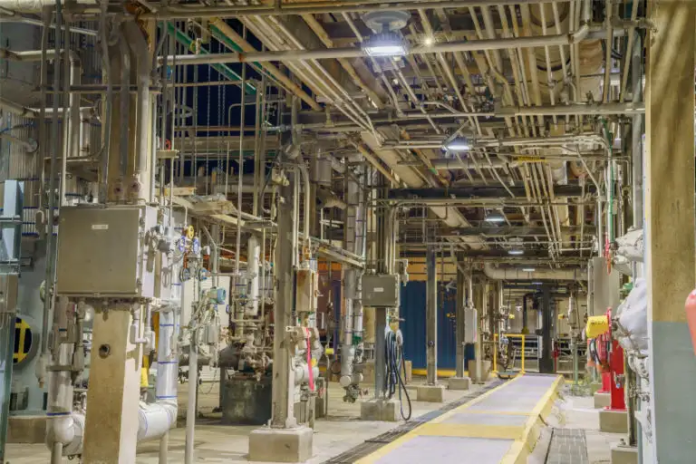As industries across every sector grapple with a massive workforce shortage and supply chain issues, it’s more critical than ever for companies to maximize efficiency and reduce waste to optimize resource utilization — both human and otherwise. For many, that includes lowering energy consumption and improving sustainability to meet both fiscal and environmental goals. LED lighting has become one of the most effective and affordable ways to achieve those objectives, with widespread and growing adoption across nearly every industrial sector. And in the coming year, we can expect to see that uptake continue as more efficient, sustainable, and advanced LED lighting systems provide even greater value for companies beyond the basics of better visibility and improved safety.

LED lighting outperforms virtually every other technology on the market in both energy efficiency and long-life performance. (Source: Dialight)
As the LED lighting industry innovates to meet customer’s increasing demands for continuously better lighting solutions, here are the top three trends that will transform the industry in 2022.
LED lighting will dominate the industry
LED is already the second most common type of lighting used in commercial applications as companies increasingly recognize the unbeatable benefits of LED bulbs. In fact, as adoption of LED has grown since 2012, all other forms of lighting have declined in favor of LED, which outperforms virtually every other technology on the market in both energy efficiency and long-life performance.
With LED bulbs now using up to 90% less energy and lasting up to 25 times longer than incandescent fixtures, the U.S. Energy Information Administration predicts that the energy savings from LED lighting could reach nearly 570 terawatt hours a year by 2035 — the annual output of more than 92 one-gigawatt power plants. By 2050, the EIA predicts LED lighting will provide up to 95% of commercial lighting, boosting energy savings even more as adoption grows.
Outside of the commercial sector, LED solutions are also gaining momentum in the industrial sector. In these harsh and hazardous environments, LED fixtures provide a superior solution with many specialized products that offer improved protection against dust, debris, vibration, and other environmental factors that take a toll on lighting. The long-life performance of these fixtures improves overall safety at these sites and also reduces carbon impact.
Sustainability will become a higher priority
Achieving corporate environmental, social, and governance (ESG) goals is becoming a top priority, especially in light of the Biden Administration’s 2030 carbon reduction goals and the International Energy Agency’s Net Zero by 2050 global initiative. Facing mounting public pressure and government mandates to disclose climate risk impacts and greenhouse gas emissions, industries will be forced to implement substantial changes in their operations and policies.
LED lighting can play a pivotal role in achieving these aggressive goals, not only for its reduced energy consumption but also lower overall environmental impact. For example, where conventional lightbulbs contain toxic mercury and other chemicals that are detrimental to both humans and the environment, modern LED fixtures are manufactured with sustainability in mind. They contain no mercury or other common lighting toxins that demand hazardous disposal, and many are made with recyclable components, helping companies meet their ESG goals.
Design innovations will add business value
Recognizing the potential for lighting to offer more than just illumination, LED manufacturers are innovating rapidly to provide value-added features that enhance the business value of LED conversion. Modern LED solutions offer higher lumens per watt and better control over light placement, while also putting more light where it’s needed most to maximize light efficacy and adding smarter lighting controls with advanced occupancy sensors.
These devices, which can detect movement over and around obstructions like shelving and equipment, allow companies to lower burn time and energy use by turning the lights off automatically when they’re not needed, but have them instantly turn on when occupants enter the area to maximize facility safety. In addition, lighting networks of the future will double as IT infrastructure, including features like environmental sensors to help detect hazardous conditions, integrated cameras to enhance security and enable the use of computer-aided vision technology, and wireless networking nodes to enable broader implementation of IIoT solutions across the facility.
For years, LED technology has been lauded as the future of industrial lighting, and that future is finally here. With innovations and advances that enhance the performance and ROI of LED lighting, while also lowering the cost of entry for companies, industrial LED lighting technology will continue to prove itself as the most efficient, sustainable, and performant lighting solution on the market in 2022 and beyond.
Advertisement
Learn more about Dialight





